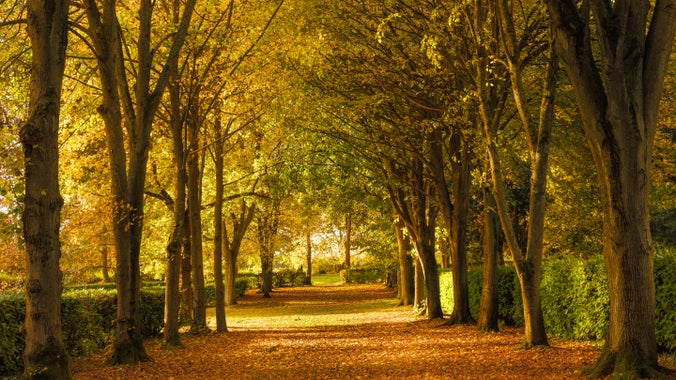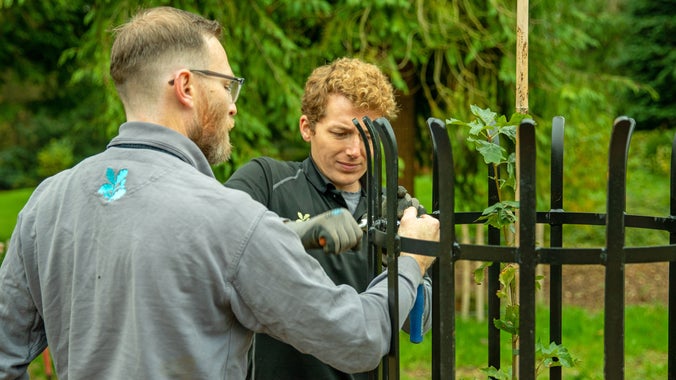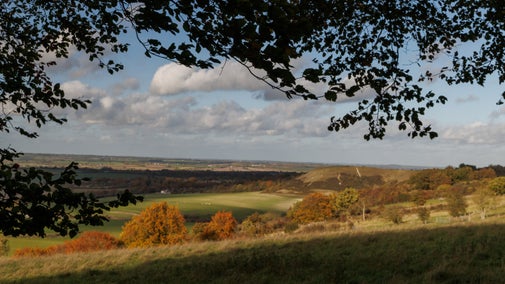Our work caring for Whipsnade Tree Cathedral

Whipsnade Tree Cathedral

Restoring Whipsnade Tree Cathedral
The Cloisters at Whipsnade Tree Cathedral
Whipsnade Tree Cathedral in Bedfordshire, one of only three tree cathedrals in the UK, is undergoing vital conservation works to restore its natural, architectural beauty for people and nature after being devasted by ash dieback over the past five years.
The ash trees here had formed one of two ‘cloister walks’, part of an extension to the tree cathedral added in 1938, with the wide spacing of the trees providing plenty of light and giving an overall effect of a grand avenue.
Ash dieback is a fungal disease that weakens tree structures. As they will not recover, we sadly has to take the decision to fell them and, in July 2024, we began a large-scale project to remove the infected ash trees and their stumps.
With changing weather caused by a changing climate possibly exacerbating tree diseases, the National Trust are working on planting more climate and disease resilient trees to create woodlands that have a diverse range of species in them as part of our ambition to plant and establish 20 million trees by 2030.
Therefore, on 4 November 2024, twelve native wild service tree saplings - a far more resilient species - were planted to rebuild this cloister walk.
It’s important to us to retain the structure of the cathedral and wild service trees are ideal. They will grow to a similar size, shape and crown size as an ash tree, providing beautiful blossom in spring and vibrant colour in autumn. There aren’t any wild-service trees in the Tree Cathedral at the moment, so we’re not just rebuilding ‘walls’; we’re enhancing the whole ecosystem. As they grow the new trees will help boost biodiversity by attracting pollinators, provide shelter for wildlife and help restore the cathedral to its former glory.
No trees will go to waste! The felled ash trees removed from the cloisters will be repurposed as woodchip paths on the Trust’s neighbouring Ashridge Estate and the stumps moved to the nearby Dell Fields to create valuable deadwood habitats for invertebrates such as beetles.
Partial closures may be in place throughout the work. Please check here for any updates.
We thank you for your support during this time.

Frequently Asked Questions
Why are we removing trees from the Tree Cathedral?
There are two different types of trees we are removing from the tree cathedral and both for different reasons. Firstly we are removing Ash trees that have unfortunately succumbed to Ash Dieback and have therefore died and become a visitor safety issue. Seconding we are removing Spruce trees that have grown too large and are now blocking out the light to the site.
Why is this work being done now? Is there a risk to nesting birds?
We are completing the work now so that the ground conditions are dry and therefore less damage will be caused to this special site. There is a risk that if we leave it later on in the year then the ground conditionns will become too wet causing the ground to get churned up by the machinery.
We have been monitoring the trees carefully and are confident that there are no nesting birds present within the trees indentified for removal.
Are you replanting new trees in the place of those that have been removed?
Yes we are. We are replacing the Ash trees with Wild Service trees that are relatively rare but native broadleaf tree. Described as "a true springtime stunner", wild service produce a beautiful blossom in spring and then provide stunning autumn colour as the leaves turn golden shades before falling from the tree. We hope that these will provide more biodiversity for wildlife, colour interest throughout the year and will be more disease resistant than other species, helping to secure the future of this special place. We will also be replacing the spruces with smaller spruces that can be used as Christmas trees in nearby Dunstable Downs visitor centre when they get to a certain size and then replaced with smaller spruces ensure succession and not allowing them to get too large.
What is happening to the wood from the trees you remove?
Stumps will be placed in a nearby field as part of a wood pasture creation project and the trunks will be stacked in the car park before being taken to Ashridge Estate where they will be used for various purposes.
Will the tree cathedral open after the works are completed?
Yes the car park and tree cathedral will be reopened to visitors but the Cloisters will remain closed for a little while to allow the ground to recover and settle.
Will the tree cathedral look different?
Yes it will look different especially with the removal of the larger spruce trees which will allow more light in. We are removed the stumps of the trees which can look quite stark but this is so we can replant trees in the same place as the removed trees. We are also doing some work to improve the seating and planting of the garden area.
History of Whipsnade Tree Cathedral
One man's vision to create a legacy for his fallen comrades. Discover how Edmund K. Blyth created the Whipsnade Tree Cathedral.

Dunstable Downs and Whipsnade Estate
Spectacular views of rolling chalk grasslands and a seemingly endless sky in an Area of Outstanding Natural Beauty
